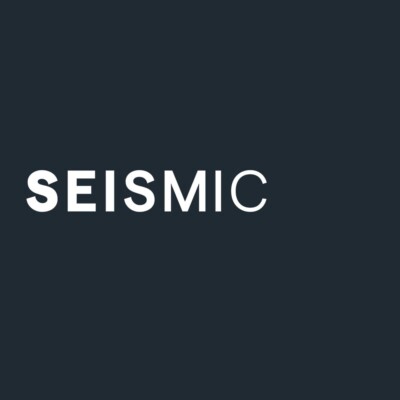
Making Climate Ambition Accessible for SMEs and Emerging Markets. The Science Based Targets Initiative (SBTi) is refining the landscape of corporate climate action through its draft Corporate Net-Zero Standard Version 2.0. This evolution puts a greater emphasis on action in achieving global decarbonisation while balancing this with a more tailored approach based on business size and criteria, especially for small and medium-sized enterprises (SMEs) and companies in emerging markets. This post explores the significant changes, analyses their impact on your business, highlights the benefits, and outlines crucial next steps for aligning your climate strategy with this leading standard.
Understanding the SBTi Net-Zero Standard v2.0
The SBTi provides a globally respected framework guiding companies to set greenhouse gas (GHG) emission reduction targets rooted in climate science. Its Corporate Net-Zero Standard helps businesses chart a course to net-zero emissions by 2050, consistent with the Paris Agreement’s 1.5°C goal. Achieving this demands profound decarbonisation across value chains.
The draft Version 2.0 builds on learnings from the initial standard (v1.2). It seeks to broaden participation while simultaneously strengthening the integrity and accountability of corporate net-zero commitments. While the core goal – driving substantial emissions cuts – remains unchanged, the methodology and requirements are adapting.
Key Changes:
- Mandatory separate Scope 1 & 2 targets.
- Mandatory location-based Scope 2 targets.
- New Category A/B definitions based on size and location.
- More stringent baseline year requirements
- Optional near-term Scope 3 targets for Category B companies.
- Mandatory near-term targets (5-year focus); optional long-term targets (for Category B Companies).
- Formalised, supplementary role for Beyond Value Chain Mitigation (BVCM).
- Public climate transition plan for Category A companies.
- Mandatory Supplier Engagement Targets.
Understanding the Changes Introduced in v2.0
For senior leaders steering sustainability, finance, or operations, understanding these fundamental shifts is vital:
- Sharper Focus on Materiality: The updated guidance encourages concentrating decarbonisation efforts on your most significant emission sources. This means concentrating on the Scope 3 categories that represent 5% or more of Scope 3. It’s also required to assess exposure to upstream and downstream emissions-intensive industries, identifying those that contribute >1% of your total emissions.
- Distinct Scope 1 & 2 Targets: You must now set separate targets for Scope 1 (direct operational emissions) and Scope 2 (purchased energy). This moves beyond reliance on purchasing renewable tariffs or Renewable Energy Certificates (RECs) alone, pushing for measurable reductions in fuel use and genuine investment in high-quality renewable energy (like Power Purchase Agreements or self-generation). Mandatory location-based Scope 2 targets add further rigour.
- New Company Categories (A & B): Acknowledging different capabilities, v2.0 introduces:
- Category A: Large companies in all countries and medium companies in high-income countries.
- Category B: SMEs (fewer than 250 employees, <€50M turnover/€25M assets) in all countries and specific medium-sized enterprises (250-1000 employees, <$450M revenue) in designated lower-income/emerging economies.
- Increased Baseline Year Requirements: Category A companies must obtain limited assurance for their Carbon Inventory for their baseline year and target year, as well as disclose the traceability of their supply chain for relevant Scope 3 sources (setting a target for full-traceability by 2035 for emission-intensive activities if not already covered)
- Scope 3 Flexibility for Category B: While measuring and committing to reduce Scope 3 (value chain) emissions remains essential, setting a validated near-term Scope 3 target becomes optional for Category B businesses. This addresses the challenge smaller firms face in influencing complex supply chains, enabling them to focus initial resources on tackling direct operational emissions.
- Prioritising Near-Term Action: Mandatory near-term targets (typically 5 years) become the primary focus, driving immediate progress. Setting a long-term net-zero target, while still encouraged, becomes optional for Category B companies.
- Integrating BVCM: Beyond Value Chain Mitigation (BVCM) – investments in climate projects outside your value chain, such as carbon removals – is formally recognised. These may be positioned as a complementary tool for addressing residual emissions or be required for companies that are not on track with Scope 1 reductions. Crucially, it cannot replace deep decarbonisation within your own operations and value chain.
- Enhanced Accountability: Category A companies need to publish a climate transition plan detailing how targets will be achieved within 12 months of target setting. For material Scope 3 emission sources, emissions will need to be reported annually, with a full Scope 3 report every 3 years.
- Supplier Engagement Targets: Companies are now required to set mandatory supplier engagement targets, aiming to have 100% of Tier 1 suppliers engaged in emissions-intensive activities transitioning to Net Zero by 2030.
What the Changes Mean for Your Business
How do these changes translate into practical considerations for your organisation?
- Strategic Planning: Your decarbonisation roadmap needs more detail, particularly distinct plans for Scope 1 and 2 reductions. Category B businesses gain strategic flexibility in phasing Scope 3 efforts. The emphasis on transition plans necessitates a clear, documented pathway to net-zero.
- Operations and Procurement: Achieving separate Scope 1 targets requires investment in operational efficiency and fuel switching. Scope 2 demands a shift towards higher-impact renewable energy solutions. Your procurement approach to energy needs careful review.
- Finance and Investment: The requirement for transition plans and regular reporting aligns closely with evolving investor expectations and regulations (like CSRD). A robust, SBTi-aligned strategy can improve access to sustainable finance. Budgeting must accommodate direct decarbonisation investments and potentially BVCM contributions.
- Reporting Frameworks: Prepare for more structured reporting, demonstrating tangible progress against targets and transparently communicating your transition plan.
Key Benefits of Aligning with SBTi v2.0
Adopting the updated standards when they are published officially will lead to significant advantages:
- Strengthened Credibility: Signals a serious, science-aligned commitment, building trust with investors, customers, regulators, and employees.
- Operational Efficiency: Reducing emissions often reveals opportunities for resource efficiency and cost savings, particularly in energy consumption.
- Enhanced Resilience: Aligns your business with the direction of climate policy, market demands, and technological shifts, future-proofing your operations.
- Improved Risk Management: Proactively addresses climate-related transition risks and unlocks associated opportunities.
- Meeting Stakeholder Expectations: Responds to increasing demands from supply chain partners, lenders, and talent for verifiable climate performance.
- Greater Accessibility: Lowers barriers for SMEs and Category B companies to engage with credible target-setting.
A Pivotal Moment for SMEs and Emerging Markets
The refinements in SBTi v2.0 mark a crucial move towards more inclusive climate action. SMEs form the bedrock of the global economy, representing around 90% of businesses worldwide and contributing over half of global GDP. In the UK, they constituted 99.9% of the private sector business population in early 2023. Their collective emissions footprint is substantial, potentially accounting for up to half of global business GHG emissions. Unlocking their decarbonisation potential is non-negotiable for achieving global climate goals.
By introducing tailored pathways and increased flexibility, particularly for Scope 3, SBTi v2.0 empowers more SMEs and companies in emerging markets – themselves vital contributors to global growth – to participate meaningfully in the net-zero transition. This isn’t about diminishing ambition; it’s about putting a greater emphasis on action over inaction, promoting credible frameworks for these essential economic players. It offers your business a clear opportunity to demonstrate climate leadership, build long-term resilience, and align proactively with the sustainable economy of the future.
Leveraging SBTi for Resilience and Reputation
Aligning with the SBTi framework, particularly with the increased accessibility offered by the draft v2.0 guidance, is more than a climate commitment – it’s a strategic imperative that unlocks tangible business value. Research highlights the significant benefits: a 2024 survey found 62% of SMEs linking emissions reduction efforts to an enhanced business reputation, while 53% said it helped differentiate them from competitors, and 30% reported winning new customers as a direct result. Furthermore, 52% are motivated by the clear cost savings and return on investment that climate action delivers. By proactively setting science-based targets, especially using the clearer pathways v2.0 offers, your business can mitigate transition risks, enhance transparency crucial for stakeholders, and build deeper trust with investors, customers, and talent. This isn’t just about environmental responsibility; it’s about building a more resilient, competitive, and future-proof business.
Positioning Your Business: What to Do Next
While the final v2.0 standard is anticipated later in 2025, and current guidance remains usable for submissions until 2026. Here are some key recommendations to navigate the evolving landscape:
- Analyse Your Emissions: Establish a clear baseline for your Scope 1, 2, and 3 emissions. Identify your major impact areas and determine your likely category (A or B).
- Review the Draft Guidance: Ensure relevant teams (Sustainability, Finance, Operations) understand the proposed v2.0 requirements and their implications for your business. Consider providing feedback during the SBTi consultation period (which is running from the 18th March through to the 1st June 2025).
- Evaluate Your Current Strategy: How does your existing decarbonisation plan stack up against the proposed changes? Identify potential gaps, especially regarding separate Scope 1/2 targets and the need for a detailed transition plan.
- Engage Internally and Externally: Discuss the strategic implications within your organisation and potentially with key suppliers or customers.
- Seek Expert Partnership: Successfully navigating these evolving standards requires specialist knowledge and expertise to interpret the guidance, model effective pathways, develop your transition plan, and set targets that are both ambitious and robust.
Turn Complexity Into Action
Our team stays abreast of the evolving SBTi landscape. We specialise in translating complex requirements into clear, actionable strategies, offering flexible support tailored precisely to your organisation’s needs. We empower your business to navigate the intricacies of target setting, implementation, and reporting. Whether you require end-to-end management of the SBTi process or targeted coaching to strengthen your in-house capabilities, we act as your dedicated partner, ensuring you not only meet the standard but turn your SBTi commitment into a distinct strategic advantage. Get in touch with one of our experts today.


